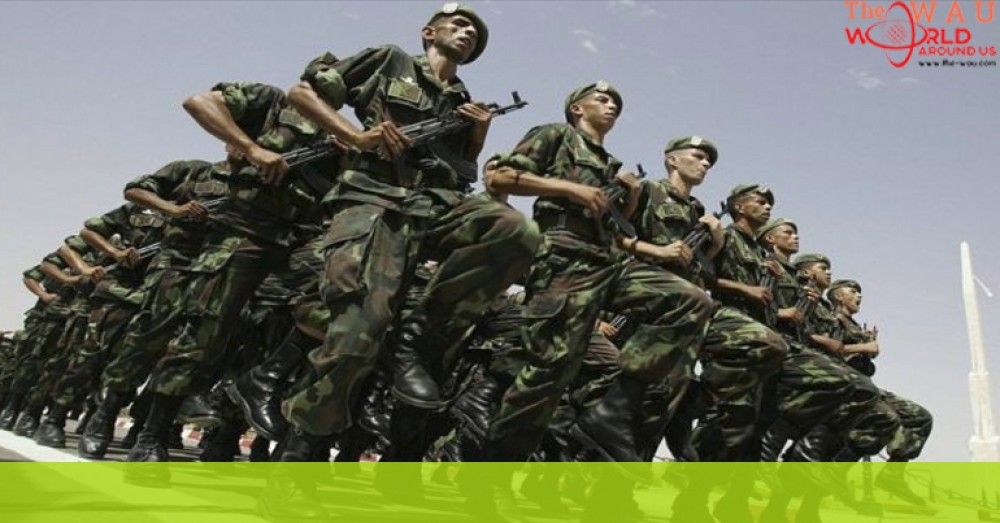The Middle East and North Africa are generally seen as one of the least stable parts of the world. Indeed, the Institute for Economics and Peace ranks it the most violent region in its annual Global Peace Index.
That’s not surprising, given the civil wars in Iraq, Libya, Syria and Yemen, as well as the insurgency in Egypt’s Sinai Peninsula, intermittent violence in Israel and the neighboring Palestinian Territories, plus the occasional flare-ups in Iran and Saudi Arabia and elsewhere.
Many of the larger conflicts have become venues for proxy wars in which regional powers are testing the abilities of their rivals. In Yemen for example, a coalition involving Saudi Arabia, the UAE and others is fighting to reinstate the government of president Abed Rabbou Mansour Hadi while Iran has been providing support to the main opposition group, known as the Houthi rebels. In Syria, elements of the armed forces of Iran, Turkey and others have been heavily involved alongside myriad rebel groups.
Such involvement requires heavy investment and Middle East governments have been spending huge amounts to sustain their armed forces, with the Gulf countries in particular involved in an expensive arms race. By far the biggest spender is Saudi Arabia. Last year, Riyadh's defence budget was more than next five biggest spenders in the region combined (Iraq, Israel, Iran, Algeria, Oman), according to the International Institute for Strategic Studies (IISS).
Money is not the only criteria for judging the capabilities of a country’s military forces though. The quality and quantity of weaponry and training are also key elements, as are the number of soldiers, sailors and pilots that can be called on in an emergency. The Global Firepower (GFP) index weighs up more than 50 such factors, including the range of weapons in the arsenal, the amount of available manpower and the abilities of the local defence industry, to come up with its rankings of the most effective fighting forces globally.
Lower scores are best in the GFP index. There is a theoretical perfect score of 0.0000, although the closest any country comes to that is the U.S., which tops the rankings with a score of 0.0857. Within the Middle East, there is a wide range of results, with Mauritania the worst performer by some distance, with a score of 4.2664 which is the fourth worst out of the 130 countries ranked globally. Further up the rankings, but still not high enough to make the cut for the regional top ten despite huge investments in recent years, is Qatar, with a score of 1.8943. Also missing out from the higher echelons is Jordan, whose armed forces have often been thought of as among the most capable in the region. It is ranked at 13 in the MENA region, with a score of 1.2024.
Here though are the countries that do make it into the top ten, in reverse order.
10) United Arab Emirates
Active personnel: 63,000
2017 budget: unknown
With a GFP score of 0.9087, the UAE is ranked well ahead of most of its Gulf Cooperation Council (GCC) neighbours, including Bahrain, Kuwait, Oman and Qatar. The IISS reckons the country’s forces to be “arguably the best trained and most capable among the GCC states”. They have gained valuable front-line experience in Afghanistan, Libya and Yemen in recent years and the country’s special forces impressed many observers with their amphibious assault to capture the Yemeni port city of Aden in July 2015. However, the UAE’s armed forces remain relatively small, with 63,000 active service personnel.

9) Iraq
Active personnel: 64,000
2017 budget: $19.3bn
Iraq has the second highest known budget of any country in the region, although this is still a long way behind Saudi Arabia’s spending levels. The country’s armed forces have made significant gains in recent years in battles against Islamic State militants, recapturing the city of Mosul in October 2017 and driving them out of other areas of the country since then. They have been helped in that task by assistance from the US and other Western powers, as well as military advice from Iran’s Al Quds brigade. Questions remain about the long-term shape of Iraq’s armed forces post-conflict, particularly its Shia-dominated Popular Mobilisation Units (Al Hashd al Shaabi) and the role of Kurdish forces. Under the GFP index, Iraq’s military scores 0.8961.
...[ Continue to next page ]
Share This Post












